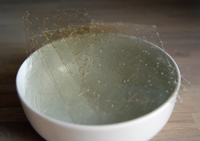
Photo from wikipedia
Three-dimensional (3D) bioprinting has recently advanced as an important tool to produce viable constructs that can be used for regenerative purposes or as tissue models. To develop biomimetic and sustainable… Click to show full abstract
Three-dimensional (3D) bioprinting has recently advanced as an important tool to produce viable constructs that can be used for regenerative purposes or as tissue models. To develop biomimetic and sustainable 3D constructs, several important processing aspects need to be considered, among which crosslinking is most important for achieving desirable biomechanical stability of printed structures, which is reflected in subsequent behavior and use of these constructs. In this work, crosslinking methods used in 3D bioprinting studies are reviewed, parameters that affect bioink chemistry are discussed, and the potential toward improving crosslinking outcomes and construct performance is highlighted. Furthermore, current challenges and future prospects are discussed. Due to the direct connection between crosslinking methods and properties of 3D bioprinted structures, this Review can provide a basis for developing necessary modifications to the design and manufacturing process of advanced tissue-like constructs in future.
Journal Title: Small
Year Published: 2020
Link to full text (if available)
Share on Social Media: Sign Up to like & get
recommendations!